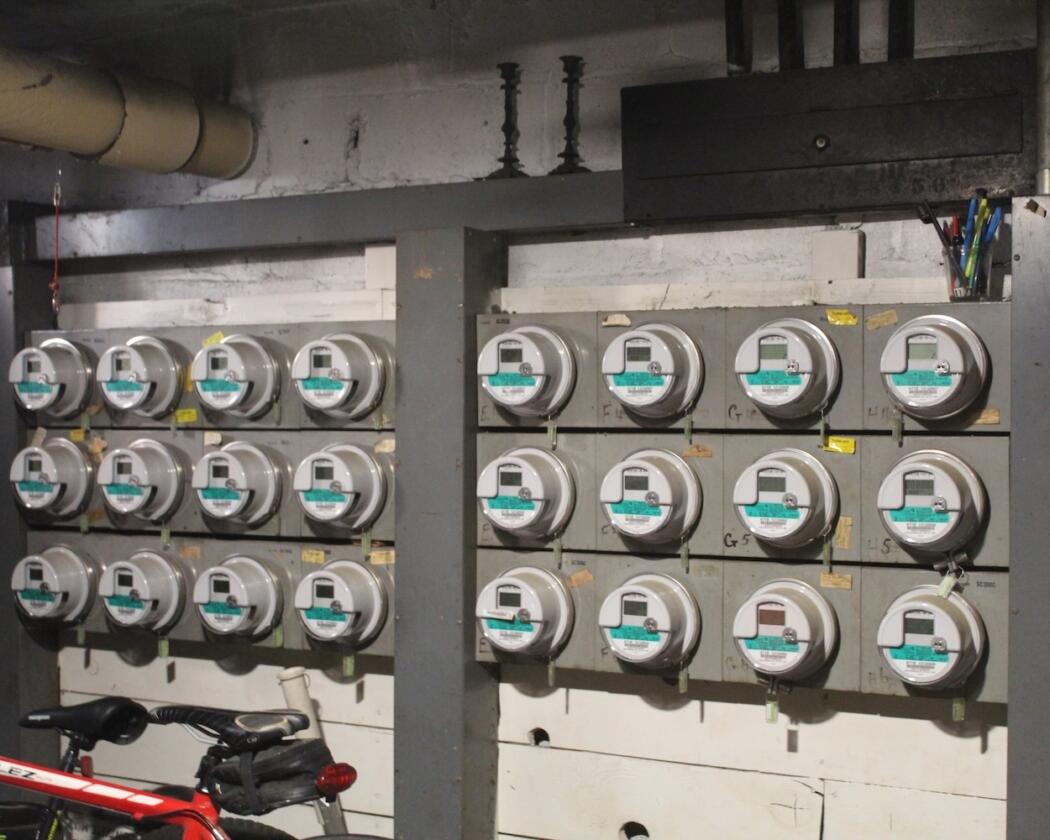
“Every win comes with a concession”: The ups and downs of navigating energy efficiency collectively
A change of plan at Inwood Park Apartments required communication, education, and more opportunities for feedback
Each electricity meter in Inwood Park Apartments' utility room represents a different unit, and a different shareholder bringing an opinion to the table. Photo: Ayana Smith
Even as his building celebrates a 27 percent reduction in carbon emissions and $24,000 saved for the building per year, Hal Fuchsman, the board president of Inwood Park Apartments acknowledges that the process of getting Kelvin radiator Cozys installed has been less than seamless.
“Every win comes with a concession,” Fuchsman, lamented when asked about the process of leading the co-op to more energy efficient heating.
The Inwood Park Apartments’s co-op board originally intended to convert their oil fuel boiler to natural gas in order to reduce the building’s carbon emissions. But that initial plan was thwarted when they learned they would need to construct a new high-pressure gas line to make it happen — and pay the $3 million cost for it.
The Inwood Park shareholders found themselves having to muddle through a middle space. The majority of residents are middle-income or retired elders living in market-rate studio or single-bedroom apartments; they couldn’t afford to fund the gas lines outright, but they also encountered few financial incentives and prescriptive pathways for LL97 compliance that felt workable for their building.
So they settled on a compromise: Installing Kelvin radiator Cozys as an “intermediate step” that could help them comply with LL97 and make their boiler more efficient. All-in, the project cost a much more reasonable $143,382.
For Fuchsman as board president, it was one thing to realize that they had to change course from their original plan. But it was another thing to announce this change to his fellow residents. The key, he learned, was constant communication and education: Representatives from Kelvin came to the building with mock devices, and held a series of information sessions to demonstrate to residents how the Cozys worked.
While Fuchsman indicated that there was already significant support for the new plan from other residents at Inwood Park Apartments, the process of engaging with his neighbors deeply — listening and responding their concerns, and advocating on their behalf to contractors — galvanized shareholders to not only be more environmentally-oriented, but also more engaged in the civic process of collective decision-making right at their doorstep.
“For better or for worse, it’s made us want to have more feedback sessions,” Fuchsman said. “People [previously] felt they weren’t heard. We’ve now implemented [meetings], not specifically exclusive to radiators, but building operations in general. We have quarterly information sessions, as opposed to just an annual meeting.”
Fuchsman expects these forums for discussion to be important as his building continues working towards ongoing compliance with LL97. He said he’d also like to see companies like Con Edison and others that have a hand in LL97 into fruition take a similar tack; clearer and more detailed communication with their customers throughout the process is paramount, he said.
“If they spend a fraction of how much money they spend on PR to tell you how green they are actually engaging with buildings and finding climate-friendly solutions… I think it would be a much different picture.”
